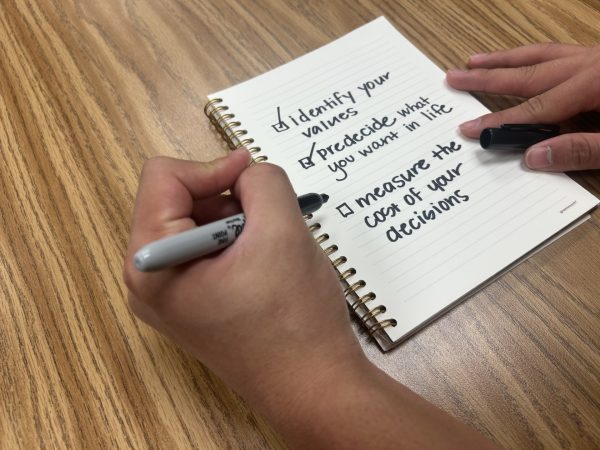The age of technology and the modern mind
Modern technology, while it can be positive, is also rapidly shaping the development and makeup of the human mind.
It is often said that the average goldfish has an attention span of nine seconds, but how long is the attention span of the average human?
As it turns out, humans have now become less focused than goldfish, with an attention span of only eight seconds, a decrease from 12 seconds in the year 2000. With the rise of social media, music and television, the average teenager receives constant stimulation nearly every day and thus is forced to make split-second decisions on what interests them and what does not. In a world where 15-second videos are king and YouTube videos rarely stray beyond five minutes, it is almost impossible to capture the modern-day media consumer’s attention for any longer than a few minutes.
Whether the lack of an attention span is solely a Gen-Z problem or an issue that applies to the general population is heavily debated. Some posit that the introduction of on-demand streaming services, such as Netflix, into the American household in the early 2000s created demand for immediate satisfaction. People no longer want to sit through commercials or ad breaks while watching a show. This idea has extended to almost every aspect of technology, far beyond television and cinema. For example, some apps now have paid ad-free versions so people will not have to sit through a 30-second commercial in order to play a game or watch a show. Regardless of whether or not these services were specifically designed for teens, it seems as though that age demographic is the one utilizing them the most, so claims that the younger generation is the only one affected by this technology phenomenon are not unsubstantiated.
Obviously, the public’s growing need for consistent, constant information flow has created a huge market for streaming services and the entertainment industry. As a result, even many traditional institutions, including journalism, have changed drastically. What used to be upwards of thousand-word stories in newspapers has decreased to short and sweet articles on the Telegraph that can be read in under 10 minutes. News outlets have been forced to shorten their broadcasts and stories just to ensure that viewers choose to pay attention. Obviously, this does not necessarily mean that journalistic integrity has been sacrificed just due to the fact that news has naturally become more condensed. But, there is something to be said about this, considering that many issues being reported on are extremely complex and difficult to sum up in few words.
So, is this increasingly condensed way in which we consume information a problem and a cause of misinformation, or is it simply a natural consequence of industrialization and the advancement of technology? The answer is probably both. Shorter and more community-driven platforms like Instagram can be a hub of false information and misleading content. However, while it initially may seem negative that teenagers prefer social media platforms over traditional news sources, the phenomenon may just be credited to a change in how they communicate and, more importantly, in how they advocate for change. Many creators utilize the typically joke-oriented platform of TikTok to speak on serious topics. 17-year-old Rhea used her account to mourn the loss of one of her friends who died in a knife attack on Oct. 19. The video received over 100,000 views and hundreds of comments offering support. She has since used her account to help teens understand the impact of knife crime and how it affects those surrounding it.
Whether you regard social media and technology as detrimental or helpful to the modern mind, it is undeniable that people will continue to desire to consume their information in shorter and shorter time periods, to demand social mediums to change and to use those mediums for their own good, and that is not necessarily a bad thing.

Molly Wetsch is a senior at LHS. She is a second-year staff member and serves as one of five Editor-in-Chiefs for the Statesman. When not hanging out in...







